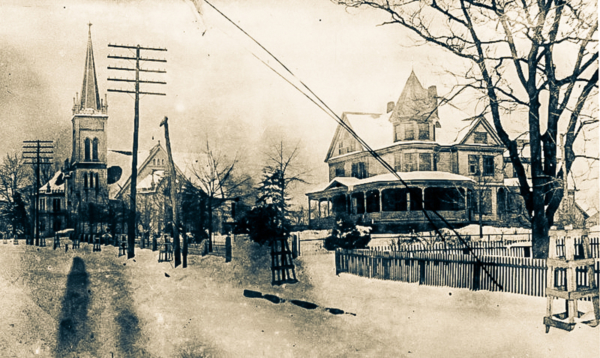Stop 8:
Montgomery Building

Photo credit: Joe Mullinax
Downtown’s prosperity was at a peak in the mid-1920s, when descendants of textile titan John H. Montgomery elected to bulldoze the old family home and build an office tower on the northern edge of the city’s main commercial district. The Montgomery Building soon became downtown’s premier office building, anchored on the first floor by shops, delis, and a grand, high-technology theatre.
Worldwide textile engineering firm Lockwood-Greene had its headquarters here for decades and the building also featured an expanse of offices for the Soil Conservation Service, a Federal agency that pioneered environmental stabilization techniques in test projects throughout the region. Along the way, they unleashed kudzu on the Southern landscape in an attempt to prevent topsoil loss, which had been a big problem. During World War II, a top-secret group from the agency’s cartography division created maps for use in future bombing raids using atlases and recent aerial photographs. During the summer of 1945, those mapmakers were all amazed to discover the final use for their recently-completed maps of Hiroshima and Nagasaki.
Elsewhere in the building, the stage of the Carolina Theatre has hosted many of the major names of 20th century entertainment. It’s most famous show may have been in 1956, when its stage hosted a young Elvis Presley while the mothers of hundreds of Spartanburg teenagers held their breath. Today the Montgomery Building faces an uncertain future.

Image courtesy of the Spartanburg County Historical Association
This was the home of Captain John Montgomery with Central Methodist Church visible to the left. John Montgomery began that family’s textile empire by establishing the Pacolet Manufacturing Company. The family would go on to operate Spartan Mills and Beaumont Mills among others.
Audio: Stop 8 - Top Secret Maps And Elvis
Side Trip: Wofford College
A half mile further up Church Street from the Montgomery Building, you'll see the entrance to Wofford College. Many of the campus's original 1850s architecture remains intact on a richly landscaped hilltop.